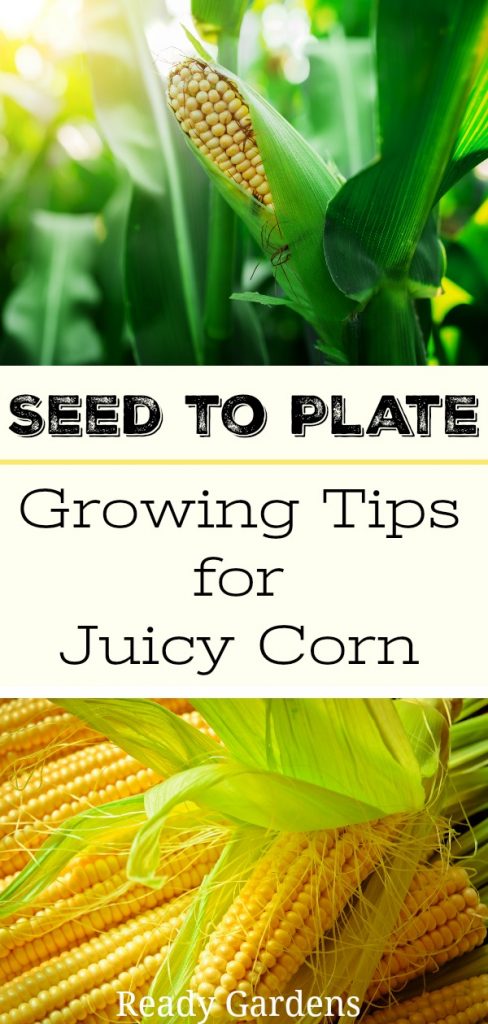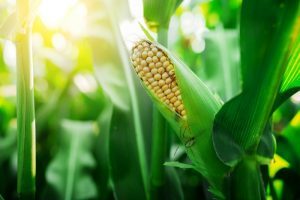Bantam sweet corn has been one of the homesteaders’ favorites for over one hundred years! It’s quick to grow, with the ears of corn being ready to harvest and eat in around 82 days. Plus, this delicious treat is packed full of nutrients and children love it! Try growing some bantam corn today!
Golden Bantam Corn supplies an excellent source of protei [1]n and is high in vitamin B6, iron, and magnesium. Corn is also high in fiber making it an excellent choice for those with a less than ideal digestive system. Corn has a higher sugar content, but it is also a good source of two antioxidants, zeaxanthin, and lutein, which are good for eye health. [2]
Did you know there’s a myth going around that the human body [2] cannot digest corn? While it is true that if you eat a lot of it, you’ll see some kernels in your stool, but that’s a good thing if you have those digestive concerns mentioned earlier. Corn contains an insoluble fiber, which is the kind of fiber that goes through the body intact and gets those bowel movements going!
PLANTING
Starting corn seeds indoors is not recommended. Corn is rather particular about how it prefers to be grown. Unfortunately, for those in more northern climates, corn requires a long and frost-free growing season. Since sweet corn is wind-pollinated, it should be planted in blocks, rather than in single rows, so keep that in mind as well.
- Work in aged manure or compost into the soil the fall before planting corn and let it overwinter in the soil. Corn is especially picky when it comes to the soil it prefers.
- Make sure the soil temperature is above 60°F (16°C) for successful germination. (Up to 65°F/18°C for super sweet varieties.) In colder zones, the ground can be warmed by a black plastic cover if necessary. Plant seeds through holes in the plastic if using a cover.
- Plant seeds outdoors two weeks after the last spring frost date [3]. Plant the seeds 1.5 to 2 inches deep and 4 to 6 inches apart. Make sure the rows 30 to 36 inches apart.
- For sufficient pollination, plan your plot right. Don’t plant two long rows, rather, plant corn blocks of at least four rows.
- You may choose to fertilize at planting time; corn is meant to grow rapidly. If you are confident that the soil is adequate, this can be skipped. But make sure your water the seeds well at planting time.
- When your plants are 3 to 4 inches tall, thin them so they are 8 to 12 inches apart.
*HELPFUL TIP: If you live in a drier climate, it is imperative to monitor the corn and keep it well-watered. Corn has shallow roots, so water at a rate of 5 gallons per square yard. Mulch will also help with the reduction of evaporation. Soil must be well drained and capable of keeping a fairly constant rate of moisture.
TROUBLESHOOTING
There are quite a few pests and problems that corn is susceptible to. Beyond deer and raccoons, corn can be affected by:
Spotted Cucumber Beetle – If the stems of your seedlings are being eaten off, the leaves are yellowing and wilting, and holes are appearing, you may have a striped or spotted cucumber beetle problem. These pesky insects should be dealt with immediately, however, because they can carry bacterial diseases and viruses from plant to plant, such as bacterial wilt and mosaic virus [4]. Adult striped cucumber beetles are about ¼ inch long and have a yellow-and-black–striped abdomen and a dark-colored head and antennae. Spotted cucumber beetles are the same length but have 12 black spots on a yellow abdomen. The larvae are worm-like, white, dark-headed, and have three pairs of legs on the thorax.
You can get rid of them by using yellow sticky traps to catch cucumber beetles. Also, try knocking the beetles to the ground and catching them with a piece of cardboard placed under the plant, or, use a handheld vacuum to suck up the beetles. They are very hard to hand pick, but it is easier to hand pick them with yellow gloves coated in petroleum jelly. You could also try to cover seedlings with row covers [5], though you must remove at the time of blossoming.
Flea Beetles -these bugs are small and shiny, with large rear legs. Their eggs are laid at the base of plant stems in the early summer after a feeding period, and the larvae feed at the roots. Adult beetles, about 1/16 inch long, feed on foliage, producing “shotholes” in the leaves. Flea beetles usually don’t cause fatal damage to established plants because the leaves are often too large. The real danger is that they can spread bacterial diseases, such as wilt and blight, from plant to plant, so deal with them as soon as possible.
Try a homemade spray to control flea beetles: [6] 2 cups rubbing alcohol, 5 cups water, and 1 tablespoon liquid soap. Test out the mixture on a leaf of the plant, let it sit overnight, then spray the rest of the plant if you don’t notice any adverse effects. Spray the mixture on the foliage of garden plants that are susceptible to these pests. You can also try using white sticky traps. Insecticides can be used, but are generally unnecessary to control flea beetles.
HARVESTING & STORAGE
- It is time to harvest your corn when the tassels begin to turn brown and cobs start to swell. The kernels should be full and milky.
- Pull ears downward and twist to take off the stalk.
- Sweet corn varieties will lose their sweetness soon after harvesting, so prepare to eat or preserve the corn immediately after picking it.
- Sweet corn freezes well, especially if the kernels are removed from the ears before freezing. A helpful guide on learning how to properly freeze corn can be found here. [7]
Did you know that corn is the only native American grain? It was cultivated by Central American natives for at least 7,000 years as one of the “three sisters”—corn, beans, and squash—of native American agriculture. The cornstalks grew tall and supported the climbing beans, while the squash sprawled out across the ground, helping to retain soil moisture and suppress weeds.

